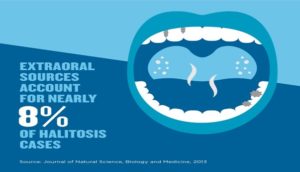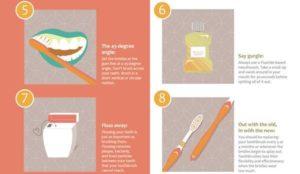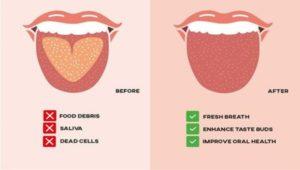Have you always felt that the alignment of your teeth is not up to the mark?
If you answered yes, then you probably have misaligned teeth. In most cases, you will not have an issue consuming your food with imperfect teeth. Things might be concerning when you have problems chewing and speaking. Moreover, you might experience jaw pain.
All these are tell-tale signs that you need to fix your crooked teeth, as that’s the root cause of these problems. If you neglect these issues, they may worsen later on and prevent you from enjoying your food. Don’t worry, as getting teeth braces will save your day!
Braces are metal structures worn on the teeth to fix their alignment. If you’re still confused, here are some vital signs you need to get some teeth braces.
Crooked Teeth
The most common sign that you may need teeth braces is the arrangement of your teeth. Not everyone has supermodel-like teeth, but your teeth must have a basic alignment. If it doesn’t, your teeth won’t look pretty.
Children who have the habit of excessive thumb-sucking usually end up with crooked teeth. The pressure exerted by the thumb on the underdeveloped teeth and gums affects the alignment. Some of the other causes behind crooked teeth include –
- If the lower or upper jaw is a bit smaller
- A facial injury that shifted the jaw and displaced some teeth
- Family history of misaligned teeth and associated problems
Misaligned teeth can cause other problems, such as gum diseases. This is because it is difficult to brush or clean crooked teeth. As a result, food might be stuck between your teeth, leading to decay and gum problems.
So, if you feel that your crooked teeth are creating moral problems, you can opt for braces.
Excessive Space between Teeth
Having a little space between your teeth is normal. But if you have too much space between your teeth, it might be uncomfortable. It happens to children and adults mainly due to the following reasons –
- Your teeth are too small with respect to your jawbone
- Large-sized labial frenum and gum inflammation
- Habits like lip sucking, thumb sucking and tongue thrusting
- Genetics
The problem is not very severe and might not bother you all your life. However, if you feel like it’s affecting your appearance, you can get teeth braces to fix it.
Braces will also help if you’re having problems while brushing and flossing. While flossing, you might be unable to clean your teeth properly due to wide gaps.
So, seek medical consultation to get braces whenever you are ready.
Problems in Biting and Chewing
Is eating and chewing food becoming an everyday hassle? It can be due to the misalignment of your teeth, affecting your natural mouth movement.
Problems in chewing can slowly worsen and might lead to cheek biting. So, you might accidentally bite your cheek while speaking or eating. If this continues happening frequently, you might have cuts and other injuries inside your mouth.
These problems can arise when your top teeth don’t come down properly on the bottom teeth. Poor alignment of your jaw, teeth and gaps between teeth are key factors that disrupt eating.
Children facing these issues might not want to eat their daily meals. That’s why a set of braces can provide the appropriate support to your teeth and fix your chewing effectively.
Facing Difficulties While Speaking
This problem is a combination of many of the pointers mentioned above.
For instance, it might have gaps between your crooked teeth. On top of all that, you might have developed the habit of cheek-biting. All these issues will result in you having problems speaking.
It’s because there might be multiple injuries inside the mouth, which hurt even more when you speak. And your crooked teeth may affect your self-image. Then, you may not want to speak at all!
Before these problems affect your social life, consider visiting a dentist for teeth braces. You must not neglect this problem if it’s bothering you daily when you speak.
Abnormal Jaw Pain
Even if you do not have any alignment issues, your jaw might have a problem.
Are you experiencing frequent jaw pain? Does your mouth ache when you open it or eat something?
You might also experience stiffness in your jaw. These problems may arise due to TMJ (temporomandibular joint) disorders. In addition, it might be caused by a jaw injury, long-term teeth grinding, and arthritis.
Here are some symptoms you need to consider for TMJ problems –
- Jaw tenderness
- Facial pain
- Pain in the region around your ear
- Clicking or locking sound when you try to chew
You need to see a doctor if the pain persists and you have difficulty opening and closing your mouth. Besides providing new teeth braces, your dentist might also ask you to consult a TMJ specialist.
That’s why it’s essential to mention your symptoms and problems clearly during the visit.
Losing Baby Teeth Early
Many oral problems can arise when a child loses baby teeth too early. Usually, children might lose their teeth six years before it starts growing. If it is too slow, the process occurs too early, and the surrounding teeth won’t be able to handle the gap.
This results in overcrowded and disordered teeth. So, if you lose your baby teeth too early as a child, you might suffer the consequences as an adult. Having poorly shaped teeth, oral gaps, and missing teeth are the most common complications.
These problems may not seem to affect you during childhood but can affect your oral appearance later on. So, getting braces early can prevent further misalignment of teeth and avert associated complications.
Feeling Uncomfortable While Smiling
Having dental problems and alignment issues can directly affect your appearance. As your smile might not look very pretty, you may feel uncomfortable while smiling. Your crooked or gapped teeth might leave you feeling slightly embarrassed in public situations.
It is a prevalent problem for people lacking backing a basic dental structure or alignment. An underbite or chipped teeth can create significant difficulties while speaking. All these factors may leave you doubting yourself every time you smile.
If you feel these dental problems affect your self-confidence and mental health, then you need to address them. Opting for teeth braces can provide structural support to your teeth. Wearing them for a specific period will fix your alignment.
At present, there are many types of advanced braces or aligners that look better than traditional braces. Moreover, they will improve your dental appearance, bite, prevent oral injuries, and enhance speech problems.
Summing Up
So, if you observe all the signs already discussed, visit your dentist at the earliest for braces. Be prepared with questions regarding your dental health and how you wish to look. Also, explain your dental issues.
Based on this information, the dentist will decide the type and shape of braces that will fit you perfectly. Moreover, they might conduct an assessment of your jaw structure, dental health, teeth and bite. The doctor might refer you to an orthodontist for the appropriate treatment.
It’s important to talk about your dental insurance benefits, past medical history and any other doubts regarding the procedure. Further, get to know the oral hygiene strategies after getting braces.
You must also know how to clean and take care of your braces. Know the number of visits and associated details about your teeth braces. Be absolutely sure before making the final call!







